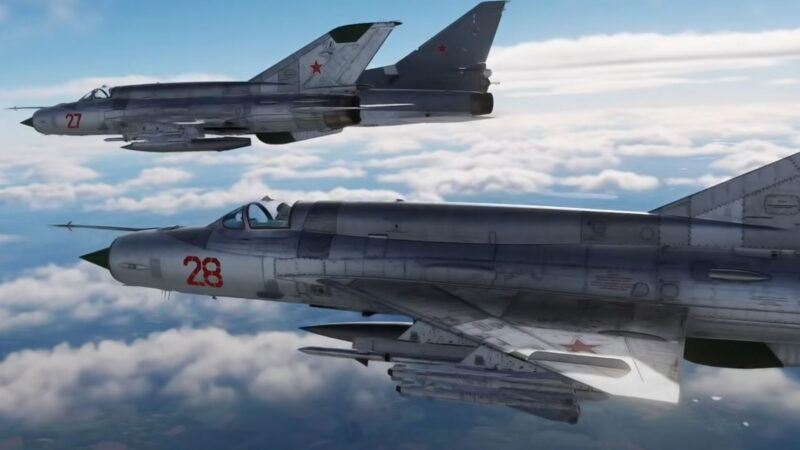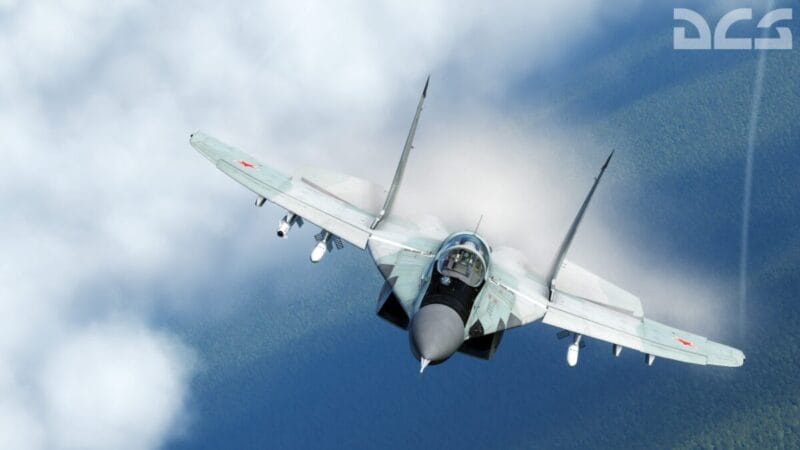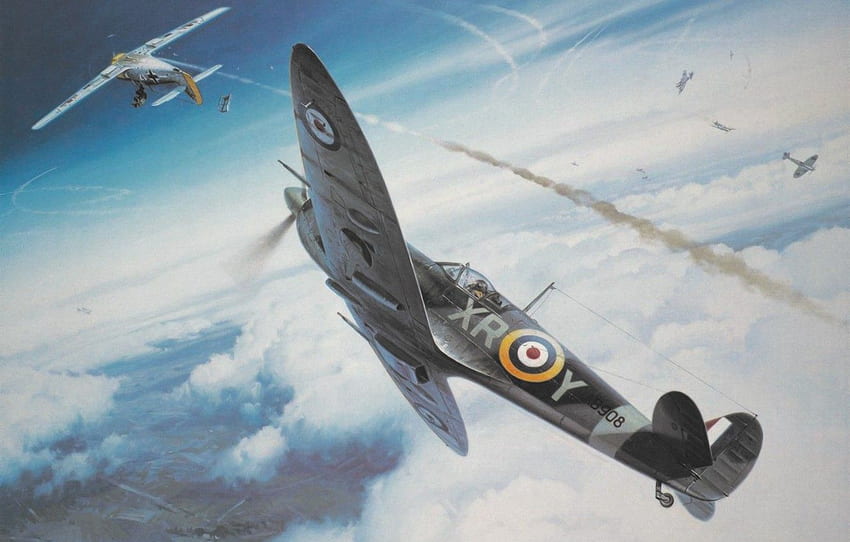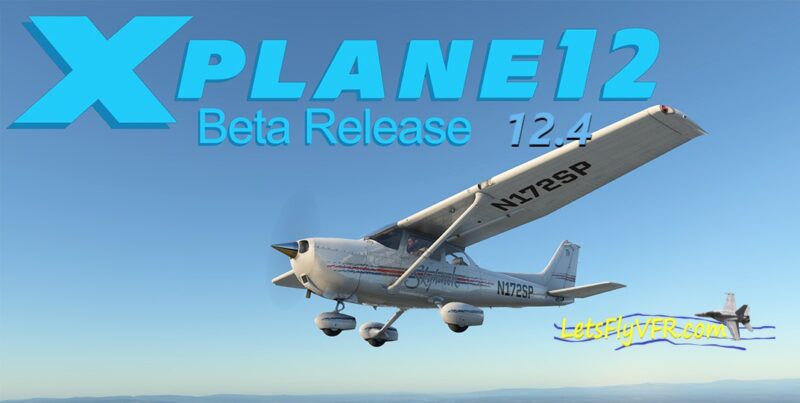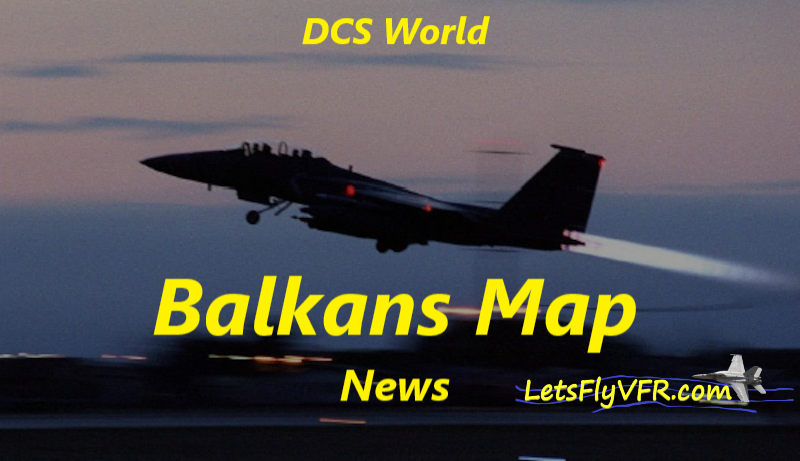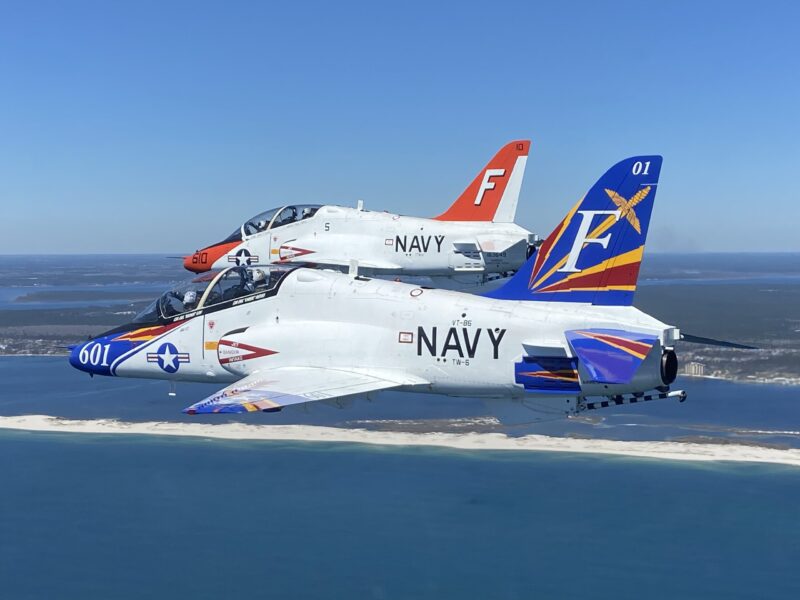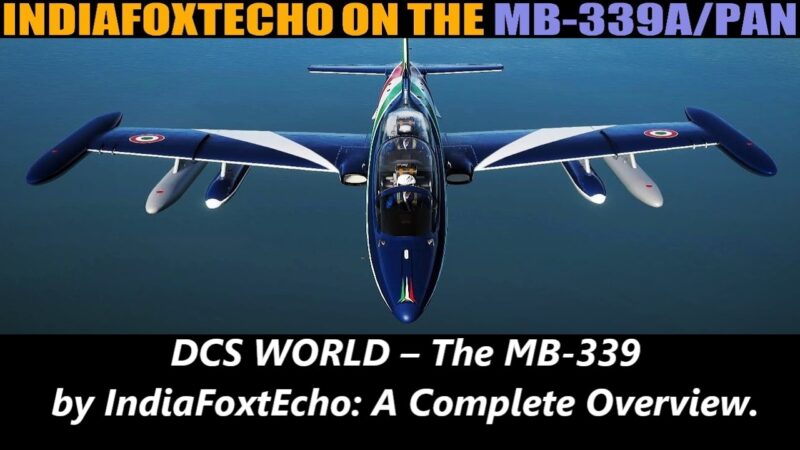DCS: Cold War Germany Map by Ugra Media – A Deep Dive
Introduction
The introduction of the DCS: Cold War Germany Map by Ugra Media is a welcome module by so many DCS world pilots. I love the 80’s servers and find myself on the now Heatblurr 80’s server nearly daily. The less technological requirements and more manual flying skills in both air to air and ground attack makes it pleasingly challenging.
The addition of the cold war Germany map by Ugra Media is another positive step in widening this very popular player bases opportunities to combat in real world scenarios and the desire to recreate this turbulent and dangerous time in world affairs is appealing to so many.
I hop the following background on the map, the period and combat data can make your desire to purchase the map with a What Where When and Why mindset to covering the many facets of the map. Enjoy.
What Countries and Borders Are Covered?
The DCS: Cold War Germany Map is centered on Central Europe during the Cold War, particularly the highly militarized Inner German Border between East and West Germany. The map includes parts of multiple modern-day countries and borders that reflect the Cold War-era geopolitical divide.
Countries Included or Touched by the Map:

- West Germany (Bundesrepublik Deutschland) – Main focus on NATO infrastructure
- East Germany (Deutsche Demokratische Republik) – Warsaw Pact stronghold
- Czechoslovakia (now Czech Republic and Slovakia) – Southern border
- Small parts of:
- Poland (to the northeast)
- Netherlands and Belgium (far west, edge of NATO lines)
- Austria (southern boundary, minimal coverage)
This makes it the first DCS map to deeply focus on Cold War Europe, creating a realistic backdrop for NATO vs. Warsaw Pact conflict scenarios.
Major and Minor Cities Included (with Detail)
The DCS: Cold War Germany map includes dozens of detailed cities and towns, ranging from capital centers to key regional hubs. Ugra Media has placed attention on authentic Cold War-era layouts and architecture.
Major Cities
- Frankfurt am Main – NATO logistics hub, close to Fulda Gap
- Würzburg – Near the likely conflict frontline
- Leipzig – Major city in East Germany
- Erfurt – Key GDR city and military site
- Dresden – Important cultural and military target
- Chemnitz (Karl-Marx-Stadt during the Cold War)
- Nürnberg
- Bayreuth
- Plzeň (Czechoslovakia)
- Regensburg
- Weimar

Minor Cities/Towns
- Fulda – Strategic Cold War “choke point”
- Bad Hersfeld
- Meiningen
- Suhl
- Gera
- Hof
- Bamberg
- Schweinfurt
- Grafenwöhr (training base region)
- Karlovy Vary (Czechoslovakia)
Each city includes:
- Cold War-era road grids, railways, bridges, and architecture
- Specific industrial and military compounds
- Power stations, communication towers, and infrastructure
East and West German Military Bases
Over 40 airfields and military bases are featured on the DCS: Cold War Germany Map historically accurate to the 1960s–80s.
West German / NATO Bases:
- Ramstein Air Base – USAFE (United States Air Forces in Europe) HQ
- Spangdahlem AB – Tactical fighter wing base
- Rhein-Main AB – Strategic airlift base
- Giebelstadt AB – U.S. Army aviation
- Wiesbaden AB
- Lechfeld AB
- Fürstenfeldbruck AB
- Bitburg AB
- Büchel AB (Luftwaffe, possible nuclear role)
- Grafenwöhr Training Area – Massive NATO training grounds

East German / Warsaw Pact Bases:
- Altenburg AB – Soviet frontline fighter base
- Gross Dölln AB – Large VVS (Soviet Air Force) base
- Erfurt AB
- Leipzig AB
- Cottbus AB
- Tuttlingen
- Brandis
- Finsterwalde
- Drewitz AB
- Jüterbog – Strategic Warsaw Pact airfield
These bases are modeled with period-accurate runway lengths, hardened aircraft shelters, radar stations, and barracks.
Points of Interest: Berlin Wall, Checkpoint Charlie & More
While Berlin itself is not included on the current playable map (it lies just northeast of the map’s edge), Ugra Media has added several Cold War-era symbolic and strategic elements, especially near the Fulda Gap, where a Warsaw Pact invasion was expected.
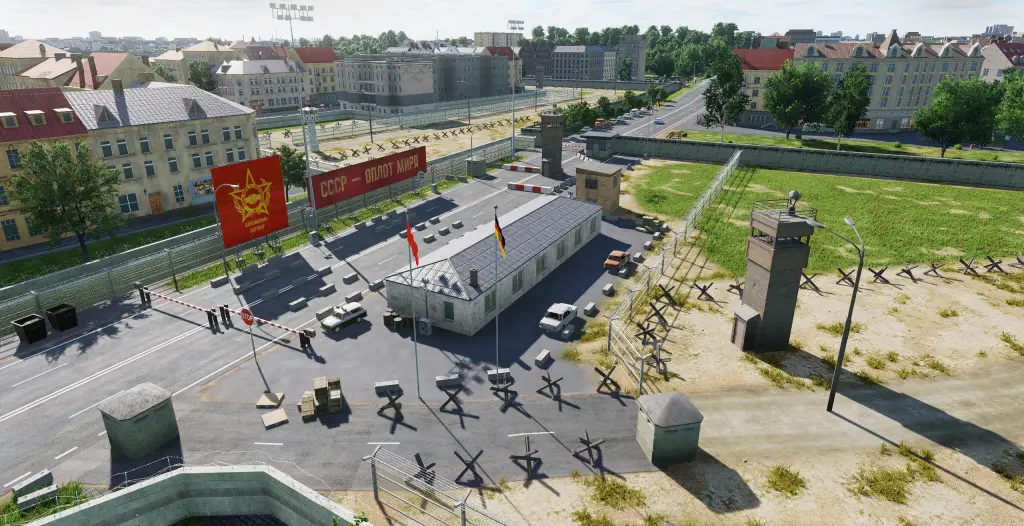
Key Points of Interest:
- East-West border zones, including:
- Guard towers
- Border fences
- Watch posts
- No-man’s-land areas
- Fulda Gap zone – historically the focal point for Cold War NATO defense planning
- Autobahn airstrips – roads designed to convert into runways during war
- Radar installations, SAM sites, and command posts
- Rail networks used for military logistics
- Large training zones, simulating NATO and Warsaw Pact exercises
Although Checkpoint Charlie and central Berlin landmarks aren’t within the map’s borders, the spirit of the Cold War standoff is heavily represented through these detailed and immersive inclusions.
Total Size of the Map
- Area: ~240,000 square kilometers
- Dimensions: Roughly 600 km (east–west) by 400 km (north–south)
This puts it among the larger DCS maps, optimized to keep performance manageable while offering rich content density.
Primary Reasons for Purchasing the Cold War Germany Map
This map is designed with a very clear audience in mind and fills a unique historical and gameplay niche in DCS World:
1. Cold War Authenticity
- First DCS map built specifically for Cold War conflicts
- Perfect backdrop for the F-4E Phantom, MiG-21, Mirage F1, MiG-19, and F-5E
2. Fulda Gap Scenarios
- Real-world military planning anticipated a Soviet invasion through this corridor
- Allows realistic re-creations of NATO defensive operations
3. Historical Mission Creation
- Ideal for campaign builders and Cold War scenario designers
- Supports air-to-ground, strike, reconnaissance, helo operations, and jet BFM
4. Multiplayer Campaigns
- Increasingly used in Cold War PvP and PvE servers like Enigma’s Cold War
- Supports asymmetric warfare and jet-age tactics
5. Great Performance in VR
- Lower city density than Syria or South Atlantic = smoother performance
- Excellent for helicopter and low-level flight fans
6. Visual Immersion
- Meticulous detail in towns, forests, and Cold War base design
- Seasonal environments make missions more immersive
7. Future-Proofing
- Will become a high-resolution detail zone in the upcoming global map
- Offers long-term value to Cold War and realism fans
What Was the Cold War? A Historical Overview
The Cold War: A Global Standoff Without Direct War

The Cold War was a period of intense political, military, and ideological rivalry between the Western Bloc, led by the United States and its NATO allies, and the Eastern Bloc, led by the Soviet Union (USSR) and its Warsaw Pact allies. It lasted from the end of World War II in 1947 until the dissolution of the Soviet Union in 1991.
Unlike traditional wars, the Cold War was marked by indirect conflicts, espionage, propaganda, and massive arms buildups—including nuclear weapons—rather than large-scale direct military combat between the two superpowers.
Timeline: How Long Did It Last?
- Start: Commonly dated to 1947, with the announcement of the Truman Doctrine and the beginning of the U.S. policy of containment.
- End: Concluded in 1991 when the Soviet Union collapsed, marking the definitive end of the ideological divide.
That’s a total of 44 years of tension, near-conflict, and global realignment.
Who Were the Key Players?
The Western Bloc (Capitalist, NATO-aligned):
- United States
- United Kingdom
- France
- West Germany
- Italy
- Canada
- Belgium, Netherlands, Norway, Denmark
- Greece, Turkey, Portugal
- Later joined by: Spain, Japan (U.S. ally but not NATO), South Korea, and Australia (strategic partners)

The Eastern Bloc (Communist, Warsaw Pact-aligned):
- Soviet Union (USSR)
- East Germany
- Poland
- Czechoslovakia
- Hungary
- Bulgaria
- Romania
- Albania (until breaking with USSR in the 1960s)
Many other nations were aligned or manipulated as proxies in Cold War conflicts across Asia, Africa, and Latin America.
Key Events and Turning Points
1. Berlin Blockade and Airlift (1948–49)
- USSR blocked Western access to West Berlin.
- The West responded with a massive airlift—over 200,000 flights—to supply the city.
2. Korean War (1950–53)
- First major armed conflict.
- North Korea (backed by USSR and China) invaded South Korea (backed by the U.S. and UN).
- War ended in stalemate at the 38th parallel.
3. Formation of NATO (1949) & Warsaw Pact (1955)
- Military alliances formed the basis of both sides’ defense structures.
- Europe was effectively split into two armed camps.
4. Cuban Missile Crisis (1962)
- Closest the world ever came to full nuclear war.
- Soviet missiles in Cuba threatened the U.S.; U.S. blockade and diplomacy narrowly avoided catastrophe.
5. Vietnam War (1955–1975)
- North Vietnam (Soviet and Chinese-backed) vs. South Vietnam (U.S.-backed).
- Became a symbol of Cold War proxy warfare and ended in U.S. withdrawal and communist victory.
6. Space Race (1957–1969)
- Began with Sputnik and peaked with the U.S. moon landing.
- Symbolized ideological competition and technological supremacy.
7. Soviet Invasion of Afghanistan (1979–1989)
- USSR attempted to prop up a communist regime; faced stiff resistance from U.S.-backed mujahideen.
- Contributed to Soviet military and economic decline.
8. Fall of the Berlin Wall (1989)
- A defining Cold War moment.
- Symbolized the collapse of Soviet influence in Eastern Europe and led directly to German reunification.
9. Dissolution of the Soviet Union (1991)
- Marked the official end of the Cold War.
- Fifteen independent republics emerged from the Soviet Union.
Ideological Battle: Communism vs. Capitalism
- The West promoted democracy, free markets, and personal freedoms.
- The East emphasized state control, centralized economies, and communist ideology.
- This divide affected every level of society, from education and science to culture and military policy.
Military and Technological Implications
The Cold War led to:
- Massive military expansions, including:
- Nuclear triads
- Supersonic jet fighters
- Intercontinental Ballistic Missiles (ICBMs)
- Doctrines like MAD (Mutually Assured Destruction), where both sides maintained enough nukes to destroy each other even after a first strike.
- Advancements in espionage, radar, electronic warfare, and aerospace technology
Why It Matters in DCS World
The Cold War shaped nearly every major aircraft, doctrine, and conflict scenario simulated in DCS:
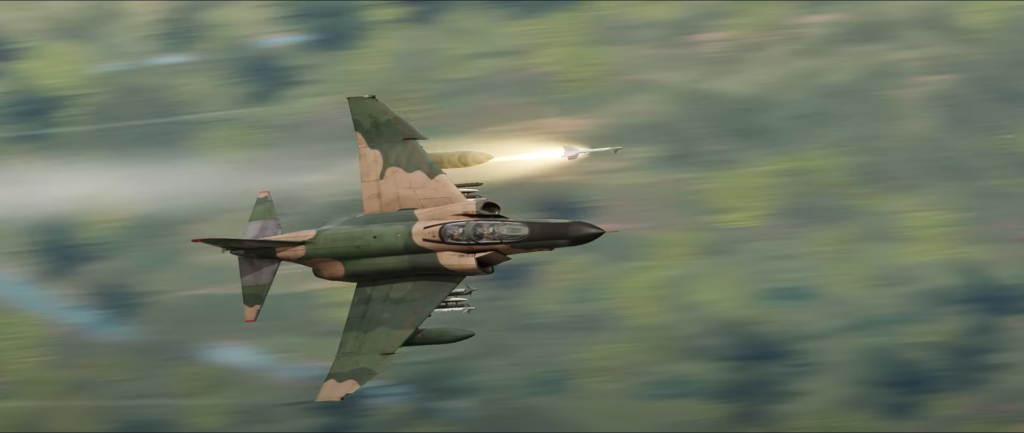
- F-4E Phantom, MiG-21, MiG-19, Mirage F1, F-5E — all iconic Cold War aircraft now flyable in DCS.
- Maps like the Cold War Germany Map allow you to recreate actual threat scenarios, especially the Fulda Gap confrontation.
- Many DCS modules reflect Cold War-era tactics, such as early warning radar, limited BVR, and dense SAM networks.
Cold War Air Combat Scenarios & Aircraft Matchups in DCS World

What Scenarios Could Be Recreated in Gameplay?
The DCS: Cold War Germany Map is perfectly suited for a wide range of historically plausible and immersive mission types. While the Cold War didn’t erupt into full-scale combat in Europe, the world was perpetually on the edge. As a result, many near-war scenarios can be modeled realistically:
Example Mission Scenarios:
- Fulda Gap Invasion (1985): Warsaw Pact armored divisions breach the border into West Germany. NATO fighters scramble to halt forward air controllers (FACs) and provide close air support.
- Border Interceptions: MiG-21s scramble to intercept U.S. reconnaissance aircraft crossing into East German airspace.
- SAR Ops Behind the Curtain: A NATO pilot ejects behind the border. Helicopter crews launch daring rescue missions while evading Mi-24 Hind patrols.
- SEAD Strikes on Soviet SAM Networks: NATO flights carry out suppression of enemy air defenses using early-generation AGM-45 Shrike or cluster bombs.
- Nuclear Alert Scrambles: Simulated DEFCON 2-style alert where both sides launch QRA (Quick Reaction Alert) interceptors in response to false or ambiguous threats.
- Electronic Warfare Missions: Escort and defend vulnerable EW aircraft like the EF-111 or MiG-25 variants equipped with ECM pods.
- Helicopter Infiltration Missions: Insert special forces behind the Iron Curtain to sabotage communications or radar installations.
These mission types offer huge potential for both PvE single-player campaigns and massively populated multiplayer Cold War servers, like Enigma’s Cold War.
Key Aircraft of the Cold War Era – Now Flyable in DCS
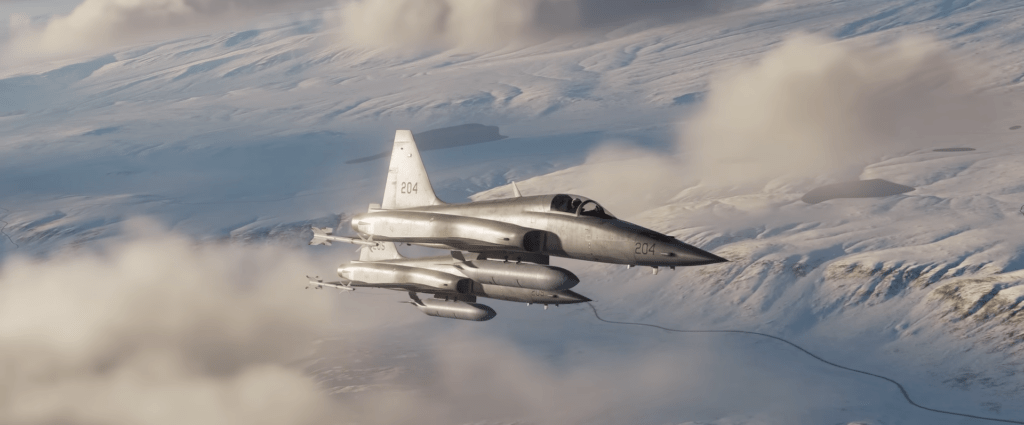
DCS World features a growing roster of Cold War-era aircraft that represent both sides of the geopolitical divide. Here’s how they matched up in terms of doctrine, technology, and combat capabilities.
NATO / Western Aircraft:
| Aircraft | Role | Opponent Equivalent |
|---|---|---|
| F-4E Phantom II | Multirole fighter-bomber | MiG-21, MiG-23 |
| F-5E Tiger II | Light fighter, training | MiG-21 |
| Mirage F1 | Interceptor / strike | MiG-23, MiG-21 |
| A-10A Thunderbolt II | Ground attack / CAS | Mi-24, Shilka, SA-6 |
| UH-1H Huey | Transport / utility helo | Mi-8 |
| C-101 & MB-339 | Light trainer / attack | L-39, Su-25 |
Warsaw Pact Aircraft:
| Aircraft | Role | Opponent Equivalent |
|---|---|---|
| MiG-21bis | Interceptor / dogfighter | F-4E, Mirage F1, F-5E |
| MiG-19P | Early supersonic fighter | F-100D, early F-4C |
| MiG-23ML (future module) | BVR fighter | F-4E, Mirage F1 |
| Su-25A Frogfoot | Close air support | A-10A |
| Mi-24P Hind | Attack helicopter | UH-1H + ground forces |
| Mi-8 | Utility / troop transport | UH-1H |
How Did These Aircraft Match Up?
The Cold War saw rapid generational leaps in aircraft technology. Each side had different design philosophies:

NATO:
- Focused on multirole capability, precision weapons, and pilot survivability.
- Early BVR (Beyond Visual Range) tactics using radar-guided missiles like the AIM-7 Sparrow.
- Emphasis on training, interoperability, and ECM (electronic countermeasures).
Warsaw Pact:
- Emphasis on high-speed interceptors like the MiG-21 and MiG-23.
- Relied heavily on numerical superiority, GCI (Ground-Controlled Intercept), and short-range missile dogfighting.
- Aircraft were rugged, simple to maintain, and operated in large numbers.
DCS gameplay allows you to explore both philosophies, and test how a well-flown MiG-21 might fare against an F-4E using superior situational awareness, or how a pair of Hinds can defend against fast NATO strikers.
Quick Performance Guide to Survival
| Aircraft | Best Sustained Turn Rate (°/sec) | Best Instantaneous Turn Rate (°/sec) | Best Turn Radius (meters) | Corner Speed (IAS knots) |
|---|---|---|---|---|
| F-5E Tiger II | ~12.8 | ~17.0 | ~520m | 380–410 KTAS |
| MiG-21bis | ~11.5 | ~15.5 | ~600m | 500–540 KTAS |
| F-4E Phantom II | ~10.0 | ~14.0 | ~650m | 420–460 KTAS |
| MiG-19P Farmer | ~13.0 | ~17.2 | ~480m | 400–430 KTAS |
| Mirage F1CE | ~11.0 | ~15.0 | ~580m | 480–500 KTAS |
| Su-25A Frogfoot (subsonic) | ~8.5 | ~11.5 | ~700m | 300–350 KTAS |
| A-10A Thunderbolt II (subsonic CAS) | ~7.5 | ~10.0 | ~800m | 250–300 KTAS |
Were There Ever Any Real Dogfights During the Cold War?
While Europe never saw large-scale combat between NATO and the Warsaw Pact, Cold War air combat did happen—often in proxy wars, and sometimes even in “deniable” encounters.

Real Cold War Aerial Clashes:
- Korean War (1950–1953): First jet vs. jet battles – MiG-15 vs. F-86 Sabre.
- Vietnam War (1965–1975): Intense aerial combat between U.S. aircraft (F-4, F-105) and Vietnamese MiGs (MiG-17, MiG-21).
- Middle East Conflicts: U.S.-built aircraft (Mirages, Phantoms) fought Soviet-supplied MiGs over Egypt, Syria, and Israel.
- Cuban Missile Crisis (1962): U-2 shootdowns, near-miss interceptions.
- Baltic & Arctic Skirmishes: Dozens of intercepts, gun camera footage, and radar locks, though rules of engagement avoided shooting.
These real-life engagements provide rich inspiration for DCS campaigns and dogfight scenarios, even if large NATO–Warsaw Pact air battles never occurred over Germany in real life.
Why Cold War Aircraft & Scenarios are So Fun in DCS
- Closer dogfighting distances: Limited BVR tech means knife fights in the sky.
- Manual flight systems: No fly-by-wire = full pilot control.
- Lower speeds = longer engagements: Dogfights often last longer than with 4th-gen jets.
- Tactical diversity: MiG-21 vs. F-5 is a radically different engagement from Mirage F1 vs. MiG-23.
- Mission planning matters: No JDAMs here—your tactics, timing, and teamwork win the day.
| 🔥 Feature | ✨ Why It’s Fun |
|---|---|
| Closer Dogfighting Distances | Limited or no BVR (Beyond Visual Range) tech means visual merges and dogfights happen close and fast—pure energy maneuvering. |
| Manual Flight Systems | No fly-by-wire computers—just raw pilot skill, trimming, managing engine performance, and hand-flying every move. |
| Lower Speeds = Longer Engagements | Unlike 4th-gen jets that fire and disengage, Cold War-era dogfights often linger in turning fights, making tactics and persistence essential. |
| Tactical Diversity | A MiG-21 vs. F-5 duel is short-range and high-alpha; Mirage F1 vs. MiG-23 can become a BVR missile dance. Every match-up has unique dynamics. |
| Mission Planning Matters | No modern smart weapons. You must plan routes, altitudes, ECM, and timing carefully. Success depends on teamwork and precision. |
Cold War Germany Map Performance Reports
So far, performance is very good, particularly compared to more resource-heavy maps like Syria or Sinai. This is due to:
- Optimized assets for Cold War-era environments
- Less dense urban areas than modern maps
- Smaller object count per square km
Users report better VR performance than on South Atlantic or Sinai maps.
Online Multiplayer Servers
Yes, the Cold War Germany map is already being adopted by PvP and PvE communities.
Notable servers include:
- Enigma’s Cold War (planned or already testing)
- Blue Flag Cold War Europe
- Several community-driven servers doing 1970s-era PvE campaigns
PvP is often asymmetric: MiG-21s vs F-5s, or Phantom vs MiG-19/21.
Popularity Among Players

Early reviews and player sentiment suggest:
- High enthusiasm from Cold War and historical realism fans
- Mission builders and dynamic campaign creators are embracing it
- Strong synergy with Cold War modules (F-4, MiG-21, Mirage F1)
It’s not (yet) as popular as Syria or Persian Gulf in raw player numbers, but its niche appeal is very strong, and it’s likely to grow.
Map Borders and Compatibility
Currently, Cold War Germany does not directly border any other DCS map. However:
- Proximity to Channel Map and Normandy makes for interesting historical continuity.
- Possible future integration once global map (earth-sized terrain) is released.
How Will the Upcoming Global Map Affect Purchased Maps?
ED’s planned Global Map will eventually replace the segmented map model with a unified Earth, possibly using procedural terrain and data streaming.
What we know:
- Purchased maps will remain as “high-detail zones” within the global map
- You will still need to buy the maps to access their high-resolution content
- Seamless long-distance flight will be possible (with low-res filler between purchased areas)
Impact:
- Cold War Germany becomes a core high-res European battle zone
- Potential to link it with future Central or Eastern European maps
- Excellent for campaign continuity and large-scale multiplayer missions
Pricing Compared to Other Maps
The Cold War Germany Map is priced similarly to other high-quality maps:
| Map | Developer | Price (USD) | Terrain Size | Era Focus |
|---|---|---|---|---|
| Syria | Ugra Media | ~$49.99 | 600 x 500 km | Modern/Mid-East Wars |
| South Atlantic | RAZBAM | ~$49.99 | 1000 x 500 km | Modern, Falklands |
| Sinai | OnReTech | ~$39.99 | 800 x 600 km | Modern + Historical |
| Normandy 2.0 | ED/Ugra | ~$37.99 | Medium | WWII & Cold War Early |
| Cold War Germany | Ugra Media | ~$39.99 | ~600 x 400 km | 1960s–1980s Cold War |
It’s a competitive mid-tier map, well worth it for Cold War fans.
The Complete Beginner’s Guide to DCS World
Welcome to the world of Digital Combat Simulator (DCS World), the ultimate flight combat simulation that brings the thrill of…
Comparing Real World Aviation Procedures to Flight Sim Techniques.
Flight simulators have grown into sophisticated training tools, bridging the gap between virtual flight and real-world aviation….
Mastering Dogfighting in DCS World and Falcon BMS: Max-Perform Your
This post covers essential techniques, cues, and parameters that new combat pilots need to dominate close-range dogfights in DCS World…
X-Plane 12.4 Beta Review – Exciting Additions!
X-Plane 12.4 Beta Review – A Major Leap Forward for Performance, VR & Visual Fidelity Note: X-Plane 12.4 is currently in…
Full Guide: DCS Balkans Map + All Upcoming DCS World
Full Guide: DCS Balkans Map + All Upcoming DCS World Modules. Summary: Eagle Dynamics and OnReTech have officially announced DCS: Balkans,…
DCS World T-45 Goshawk Formation Flying for Beginners Tutorial .
Military Formation Flying in DCS: Your First Flight in the T-45 Goshawk. So, you’ve got your wings (virtually speaking), strapped into…
DCS WORLD T-45 Goshawk EASY Navigation for Beginners.
DCS WORLD T-45 Goshawk EASY Navigation for Beginners is simply that. We do our planning in the DCS World Editor…
How the U.S. Navy Trains Jet Pilots: A Complete T-45
Welcome to Letsflyvfr.com guide to T-45C Goshawk Training – How the U.S. Navy Trains Jet Pilots so you can train…
DCS WORLD – The MB-339 by IndiaFoxtEcho: A Complete Overview.
The MB-339 occupies a very particular niche in DCS World: it’s not a fighter, not a frontline attack jet, but…
Author
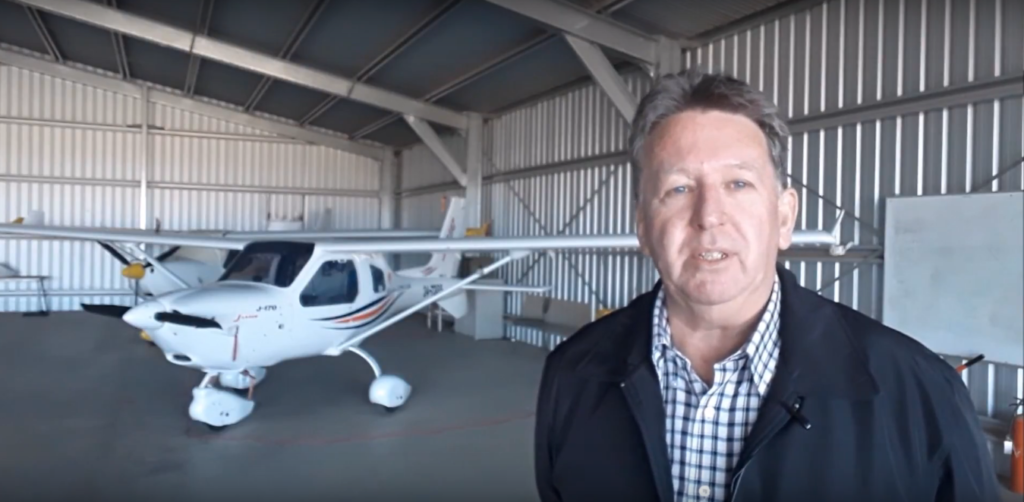
Brendon McAliece (Aka Gunnie) is a military veteran with 23 years working on Jet Fighters, their weapons systems and ejection seat/module systems as well as munitions and R&D. Involved with flight simulation since the 1980s, he has flown all the major flight simulators over the years.
He is an Australian expat who has lived in Malaysia, UK, Saudi Arabia and more recently Thailand. He is a multi-lingual blogger who loves to share his life experiences here on LetsFlyVFR.com and DreamingGuitar.com, with his lifestyle and Travel experiences Blog plus his Dreaming Coffee website.
Learn More @
DreamingGuitar.com – DreamingCoffee.com – LetsFlyVFR.com
( HOME – BLOG – SHOP – ABOUT )
As an Amazon affiliate I may benefit from qualifying sales.
